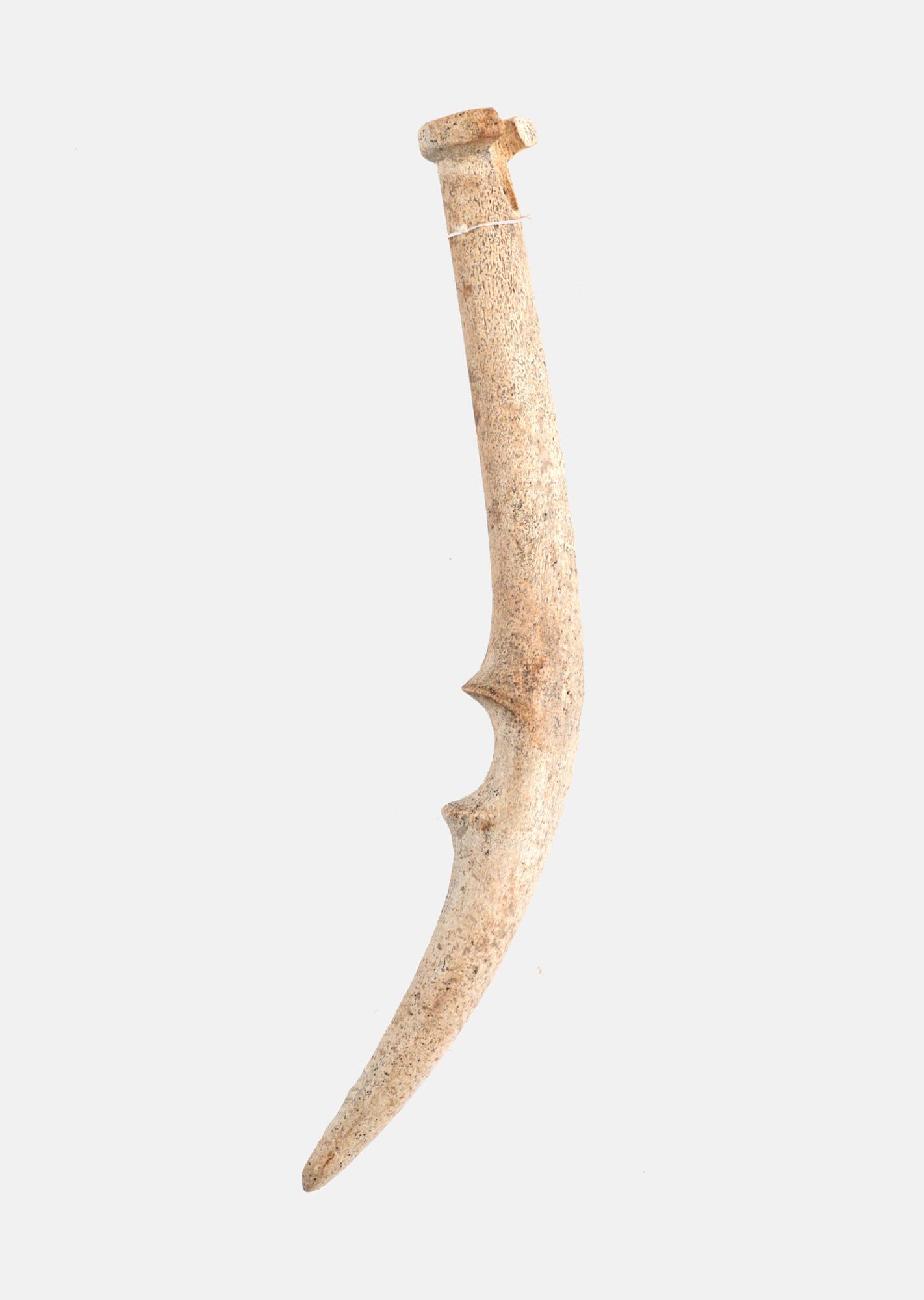The exhibition of the Chelyabinsk State Historical and Archaeological Museum-Reserve “Arkaim” presents an item made of horn. It was discovered by the expedition of the Arkaim Reserve led by the archaeologist Dmitry Zdanovich during the excavations of mound 4 of the burial ground in the village of Stepnoye, Plastovsky district, Chelyabinsk region. Grave pit 13 is one of the largest on the site of the multi-burial mound 4. The ceiling of the chamber was supported by a pillar. Numerous remains of sacrificial animals, including a whole skeleton of a dog, lay on the floor. Buried in the pit were two children about nine years old, positioned parallel to each other, heads facing north, crouched on their left sides. The finds in Grave Pit 13 included ceramic vessels, a shield-shaped cheek-piece made of horn, objects made of wood with metal staples, stone tools, 13 arrowheads made of stone, bone, and horn, a string of silver beads, knucklebones, and parts of a compound bow.
The item found in burial 13 is of curved nail-like shape. One end is pointed, at the other one there is a “cap” with a slanted through hole. The 12.7 centimeter long piece is made from a segment of a large animal’s antler. The surface of the perfectly preserved item is thoroughly polished. The piece is presumably identified as a weft for knitting/weaving. A typologically identical item of 12 centimeters in length was found in the Volga region.
The Sintashta and Petrovo weaving was developed at a relatively high level. Weavers knew how to make fabrics of various tabby weaves: rare and dense plain weave fabrics, sackcloth, and repps. It is very likely that they already had a classical weaving loom with at least two weaving sheds and a heald — a device for dividing the warp threads into even and odd ones, which allowed mechanical throwing of threads in both directions. The loom could have the form of a horizontal frame, a vertical frame loom or a vertical loom with weights.


